Many dogs love to play with humans, and this exuberant penchant for following directions can be turned into a knack for learning tricks. When treats are involved, some dogs can exhibit a remarkable ability to learn. Our list of the seven best dog tricks shows some commands that are sure to wow onlookers. Beyond that, the time that it takes to teach a dog can be a rewarding bonding experience for both the pet and the owner.
Man’s best friend is making no bones about it — give them a treat over a chew toy every day of the week! Psychologists at the University of Florida say that nine out of 10 dogs overwhelmingly prefer food as a reward over toys when given the choice. Even more ofa reason to have treats on hand!
While the saying goes, “You can’t teach an old dog new tricks,” one study might beg to differ. Results show that 71 percent of pet owners believe their furry friend has gotten smarter with age. In fact, 56 percent say they have gotten better at learning tricks over the years. Do you agree?
Dog tricks might seem silly to some, but building good obedience in a pet is always time well spent. We scoured ten expert recommendations to come away with the seven best dog tricks that were mentioned most. Let us know your favorite canine tricks in the comments below!
The List: Best Dog Tricks, According to Training Experts
1. Sit
Sit is the most basic and useful command. When treated as a trick and reinforced with treats, dogs can learn to sit with a hand cue or even a nonverbal like a click or whistle. Talent Hounds says, “[My Dog] Kilo loves sitting, and it is one of the only tricks he can do from the word ‘Sit’ remotely or with just a hand signal. I just raise a treat in front of him above his nose. It is a foundation for many other tricks and very useful as an obedience behavior if Kilo gets anxious or excited.”

It’s a classic that most likely every dog knows! Hundeo adds, “This one is probably the simplest and most famous dog trick. However, as simple as this command is, it is also one of the most important! After learning this, your dog will sit on command, which will be of constant use to you in everyday life; for example, when you are waiting at a traffic light.”
Master Class says this is one of the first tricks you teach your dog, along with “shake” and “stay.” How do you do it? “To teach this trick, keep your foot on your dog’s leash, allowing them only a little room to move but not enough to jump up. Hold a treat above their head so that they move into the sit position naturally, then say ‘sit.’ Repeat and reward until your dog understands the sit command.”
2. Shake Hands
Nothing beats a good, firm handshake to introduce yourself. It turns out that this can be true for dogs too. Pawshake raves, “Shake hands (or a paw shake!) is a popular dog trick and is usually the first trick most people teach their dogs. This is an easy trick to teach, and most dogs pick it up really quickly.”
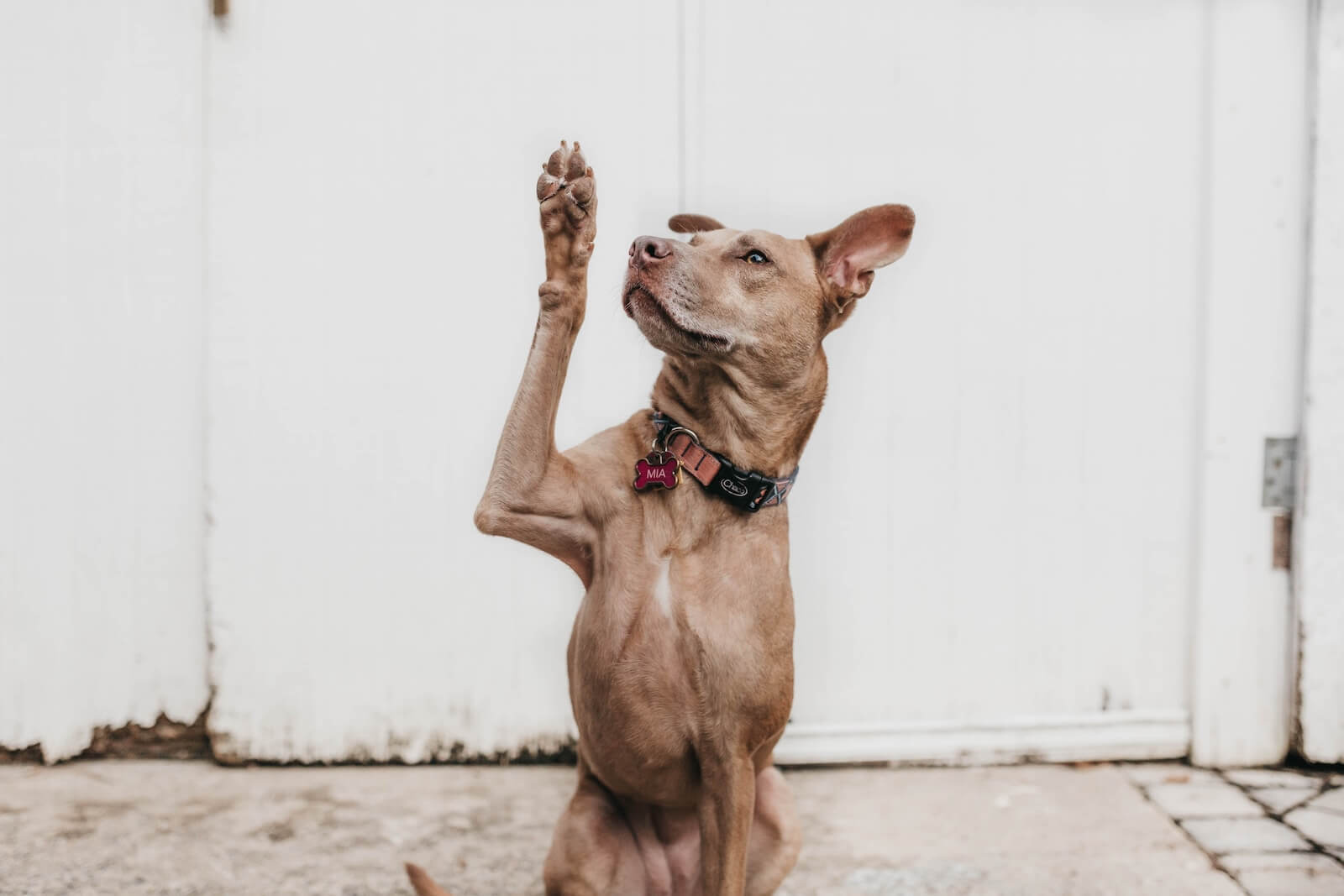
It comes naturally to pups. Pet writes, “Teaching a dog to shake paws is generally pretty easy because some dogs naturally raise their paw when asking for a treat… Ask your dog to sit. Hold a treat in your closed fist. When your dog lifts its paw up, even the slightest, give them a treat. If they don’t lift it naturally you can gently lift your pet’s paw and say ‘shake’ and then give them a treat.”
Reader’s Digest exclaims, “This is a classic easy dog trick. It also helps your dog get used to having its paw touched—like for clipping nails. To try the trick for yourself… remember, consistency and positive reinforcement are the biggest dog training secrets.”
3. Kiss
Kiss can be a functional command that teaches a dog when it’s appropriate to smooch. A variation of this trick can also be to teach a dog to gently boop rather than lick. Dog Time comments, “Use positive reinforcement techniques such as treats, praise, and petting to reward your dog when they perform the desired behavior. Yes, your dog may already shower you with kisses on a daily basis, but now you can actually teach them to kiss you on command.”
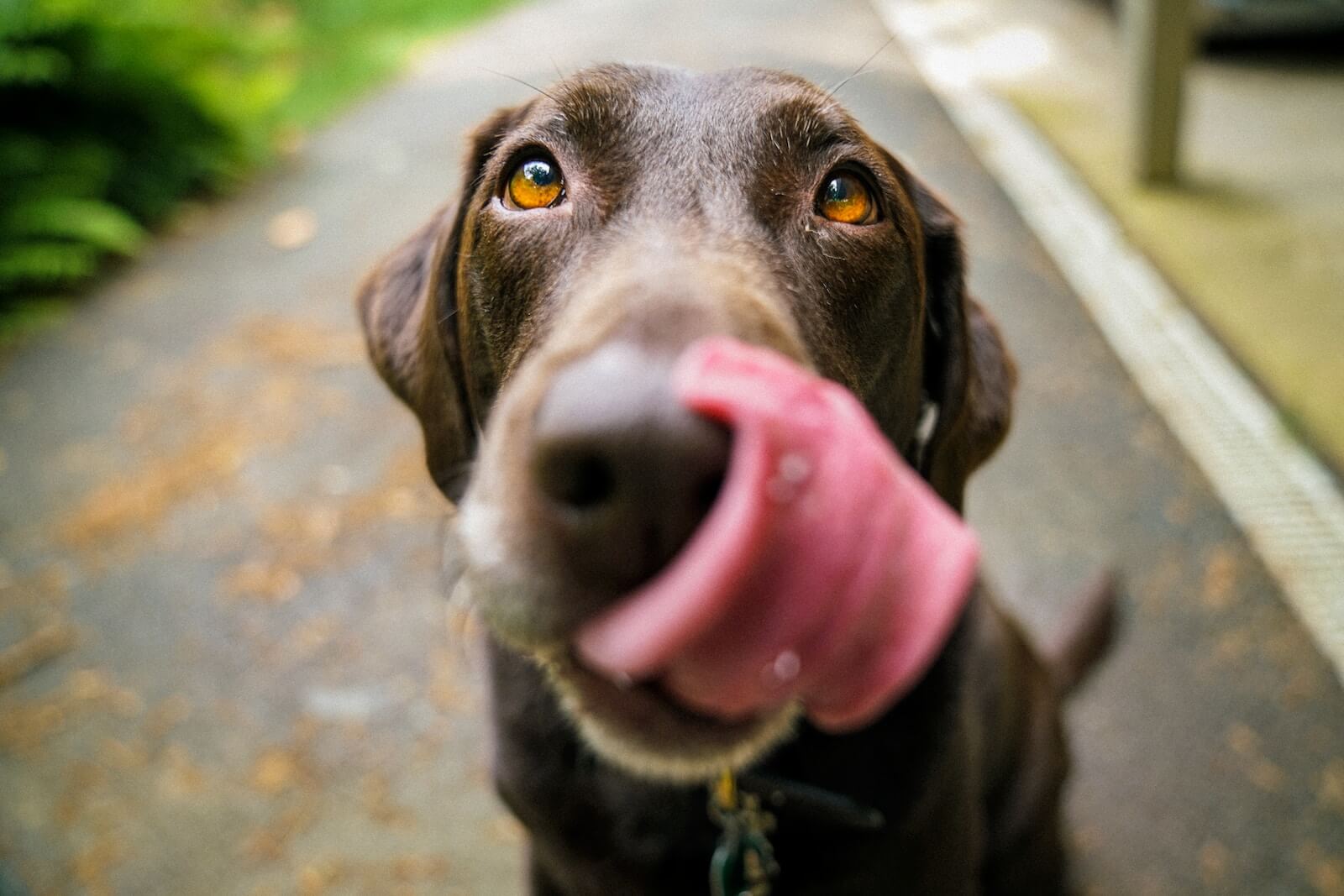
Is your pooch up for the challenge? Newsweek adds, “Dogs love to lick, so this can be a challenging trick to begin with. Hold a treat up to your face and say ‘kiss’ to your dog. Move your cheek towards your dog and wait until it touches your face with its nose. As soon as it does, move back before it licks you and give the dog the treat. If you do it quickly enough, your dog will learn to gently touch you with its nose to get food.”
The Spruce Pets says its super easy to teach, too. “While not everyone enjoys a big, wet doggie smooch, this dog trick usually goes over very well with kids. By putting a little treat on your cheek and adding the command, you’ll soon be able to get all the affection you want from your dog on demand! Another benefit of teaching your dog to kiss on cue is that it can help you prevent unwanted licking.”
4. Roll Over
This is a trick that some people will try with a dog that they don’t even know! Hepper Blog explains, “Roll over is a more advanced movement that you can teach your dog after getting accustomed to the ‘down’ position. Get them to lie down and put a treat in your hand. Move your hand around their head to get them to follow it without standing up.”
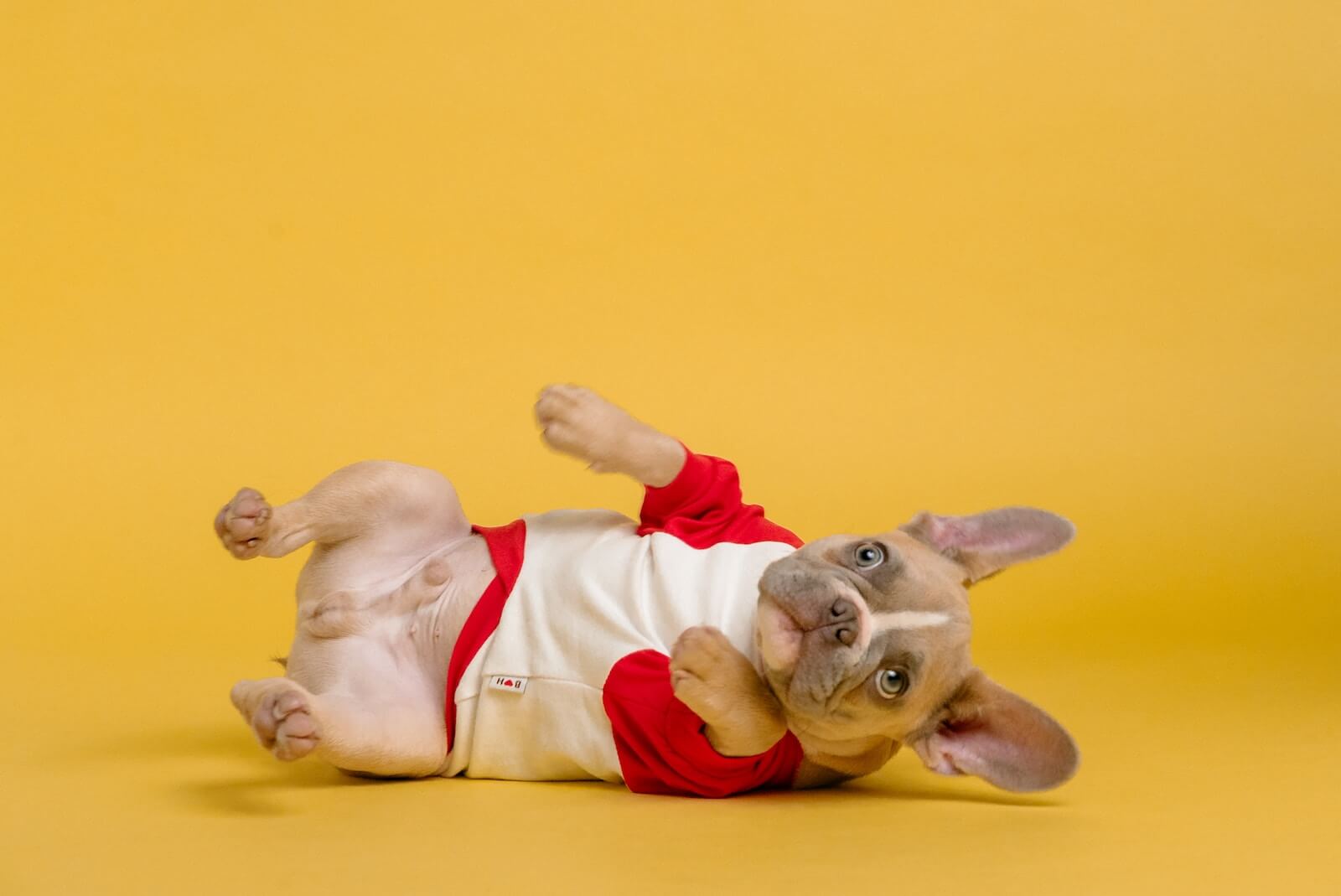
When a good relationship is present, this trick can be easy to teach. Pawshake offers, “Teaching your dog to roll over can be challenging for some dogs more than others. It requires a high level of trust from your dog because rolling on to their back is a vulnerable position for a dog. So make sure you practice in a calm and safe environment and take your time with this dog trick.”
Pet states, “This trick is much easier for smaller and more agile dog breeds, however, with persistence any dog can be taught to roll over. When teaching this command, it’s important to remember not to physically force your dog to roll over, using your hands. Rather use the treat to lure them into the position that you want, this will help them learn the behavior faster.”
5. Play Dead
This macabre trick is a combo command. If a dog can already follow basics like sit and stay, this one can be a quick trick to teach. Pawshake compliments, “Playing dead or getting your dog to lie still on its side is another crowd favorite. If you are not a fan of guns, you can always use the cue ‘boo’ and pretend to be scaring your dog into a fainting position for this dog trick instead.”
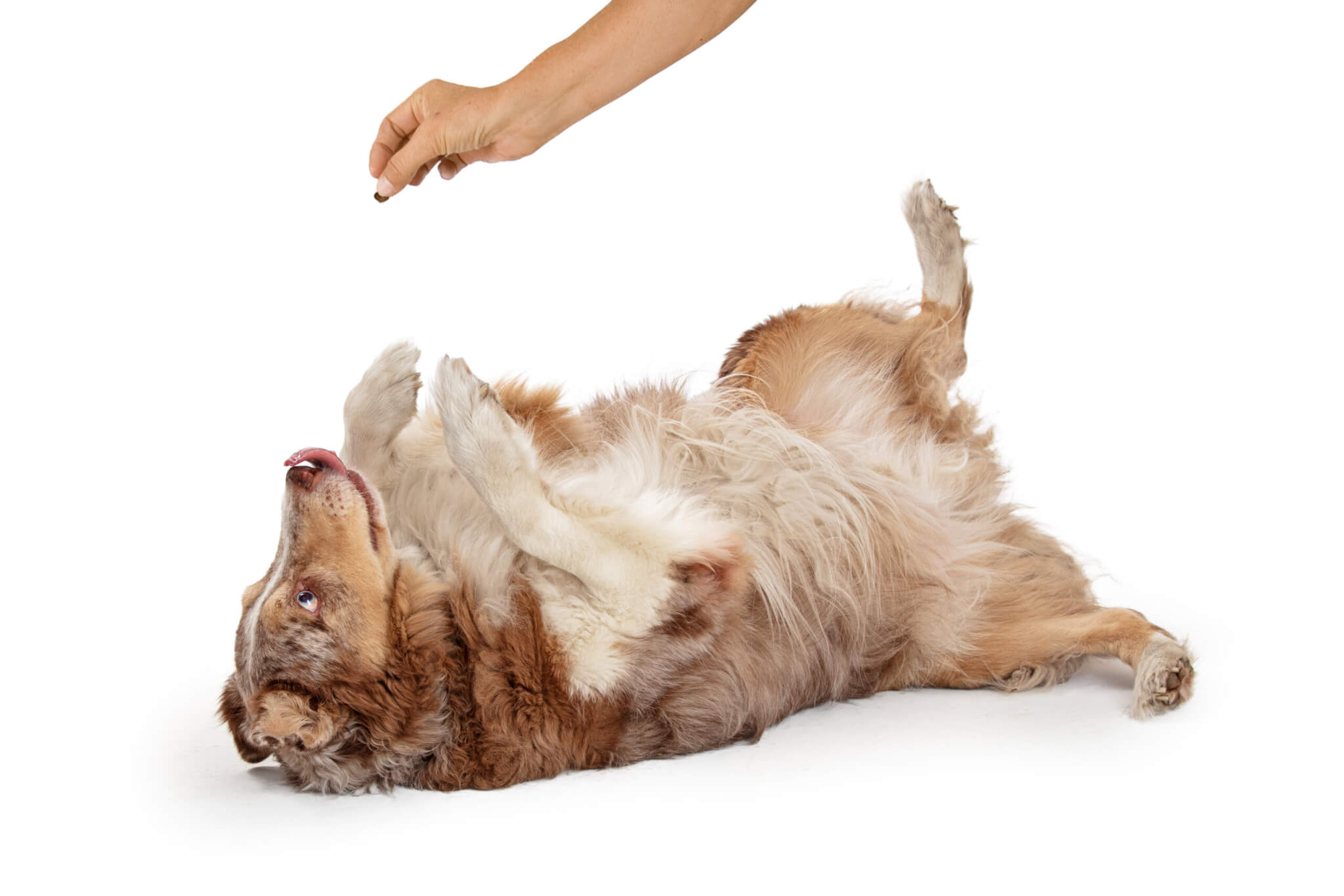
Master Class says to first have your dog lay down. Then, “Hold a dog treat between your first two fingers, a few inches above your dog’s nose. Bring the treat over to their side, luring your dog to roll over to continue looking at the treat. When your dog is lying on the correct side, reward them with the treat and verbal praise. Repeat the action several times, rewarding your dog each time for lying on their side.”
Plus, you can whip this trick out any time you have guests as a crowd pleaser. Dog Time writes, “‘Play Dead’ is a great party trick that will most definitely impress your friends and family. Unlike simpler commands like sitting or shaking hands, playing dead takes a bit more time and persistence to master.”
6. Speak
Speak is a useful trick in that it can teach a dog when not to bark. Adding treats into the training regimen will improve long-term results. “Teaching your dog when to speak is an excellent way to help them know when it is appropriate and when it isn’t. Start by trying to encourage your dog to bark, and then use the command ‘speak.’ Do not reward them until they make a noise,” according to Hepper Blog.

The Spruce Pets says teaching this trick is fun for both parties. “Training a dog to speak is fun and it helps to solve a common behavior problem. Many dog trainers recommend using the ‘speak’ and ‘quiet’ commands to put an end to excessive barking. Putting these on command allows your dog to bark in certain situations, and also allows you to have control over when the barking should start and stop.”
According to Newsweek, “To get your dog to speak on command, get them to bark naturally. As your dog barks, say your cue word – such as ‘speak’ or ‘talk’ – in a clear voice. Praise your dog and give it a treat or toy. Repeat this process several times until your dog understands.”
7. Back Up
Tricks that train a dog in good positioning can help to avoid stumbles. Additionally, they can be useful for urban pets in situations like elevator rides. The Spruce Pets claims, “Back up is a fun dog trick that can come in handy in a variety of situations. Once your dog knows how to back up on command, you can use it to keep it from rushing out the door, crowding you at the refrigerator, or just to entertain your friends.”
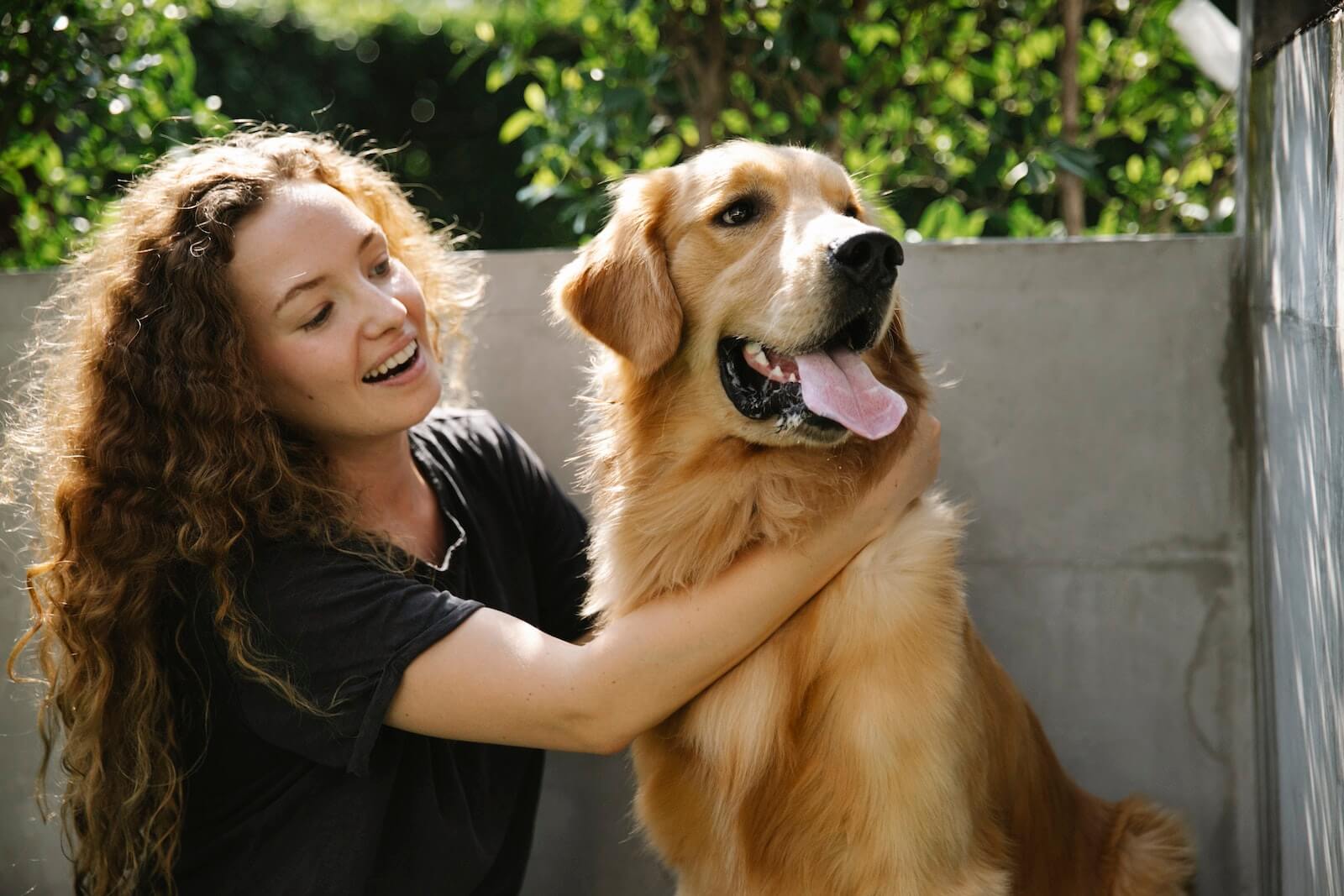
This trick is for more than just show. Hepper Blog adds, “Teaching your dog to reverse on command is handy for numerous situations, especially if they like to be close to you all the time. Start by standing in front of your dog and walking toward them saying ‘go back’ while they automatically walk backward to get out of your way. Eventually, after repetition, you should be able to say ‘go back’ without moving.”
Master Class reviews, “‘Back up’ is a useful command because it can help get your dog out from under your feet. Get your dog in the stay position, then turn and move away from them. After you turn back to face them, walk towards them while they’re in the stay position, leaning your body forward.”
You might also be interested in:
Sources:
- Pawshake
- Pet
- Reader’s Digest
- Talent Hounds
- Hundeo
- Master Class
- Dog Time
- Newsweek
- The Spruce Pets
- Hepper Blog
Note: This article was not paid for nor sponsored. StudyFinds is not connected to nor partnered with any of the brands mentioned and receives no compensation for its recommendations. This article may contain affiliate links in which we receive a commission if you make a purchase.
